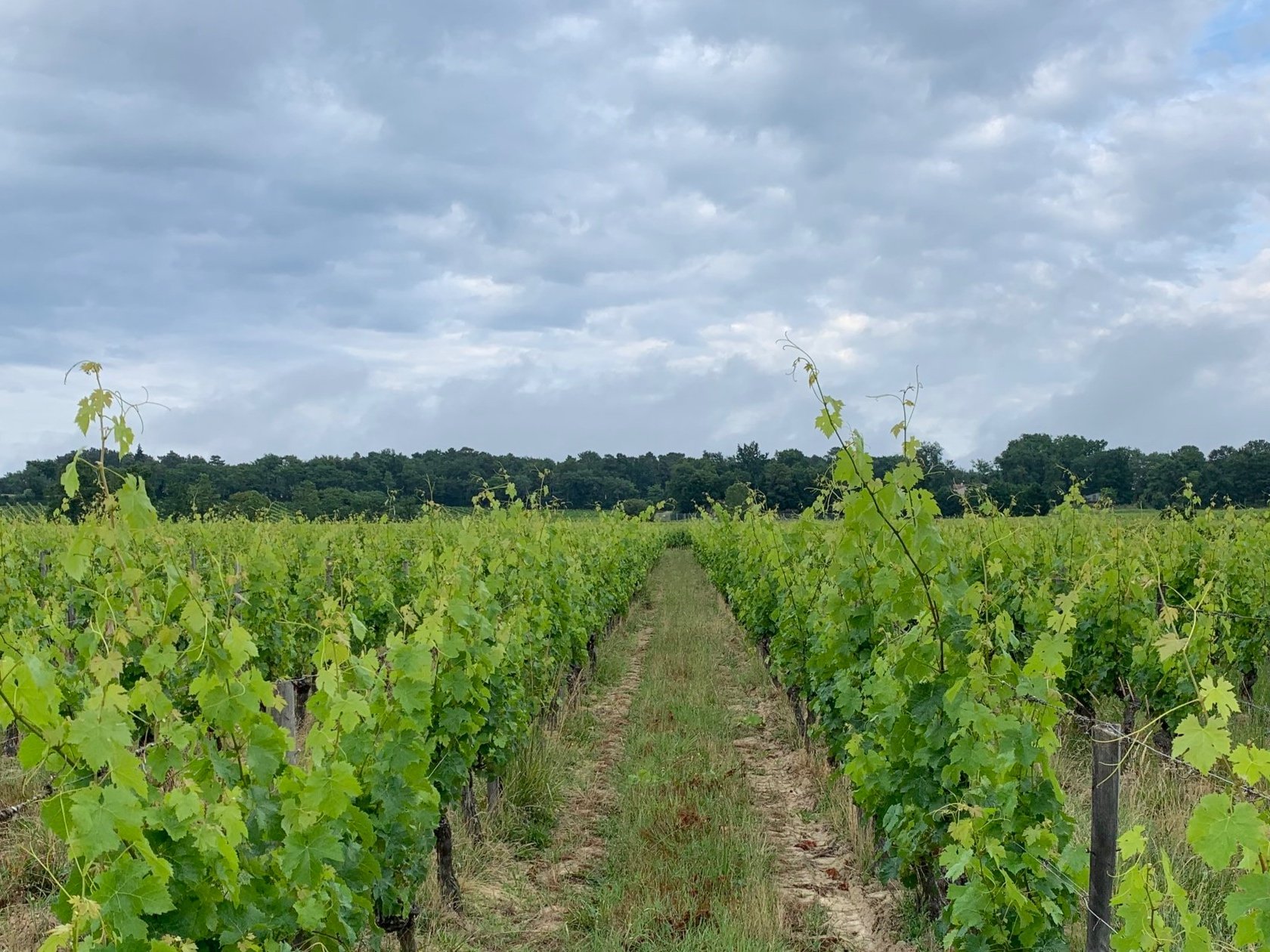
Champ Des Treilles
OUR HISTORY
The cradle of our families is located in the region of Sainte-Foy la Grande, a small town on the Dordogne river; east of Bordeaux.
We met in adolescence, on the benches of the Lycée. Then, after our studies, we created a family with the birth of two children, Thomas and Laure.
In 1998, the decision to keep the family vineyard was obvious because it was a question of saving old vines, some of which had been planted during the Second World War.
We hadn't evaluated the difficulties that would punctuate our journey. Despite this, we have never changed from our line: to produce great, pure and sincere wines.
Corinne has become the new winemaker. Jean-Michel kept his position as Technical Director of Château Pontet-Canet until 2020.
Since then, we have lived on the estate as close as possible to our vines.
VINEYARD
The vineyard has 10 ha (25 acres) of vines. It is located on clay-limestone soils with sometimes flint outcrops.
2/3 with red grape varieties; mainly Merlot, then Cabernet Franc, Petit-Verdot and finally Cabernet-Sauvignon.
1/3 with white grape varieties; Sauvignon Blanc, Semillon and Muscadelle.
The traditional planting density in the region of 5000 vines/ha (2000 vines/acre) has been maintained despite the generalization of the local decrease in the number of vines. Moreover, some plots have been planted or brought by doubling the rows to 10000 vines per ha (4000 vines/acre). Indeed, the more plants per ha, the stronger the competition between the vines and therefore the lower their individual production but of high quality.
The average age of the plots is about forty years, with a strong desire to preserve the old vines that produce wines of great concentration.
PHILOSOPHY
IN THE CELLAR…
The whites are pressed and kept cold for 24 hours. Then, sclear juices is separeted from sediments and will go into alcoholic fermentation, at their own pace, only with the indigenous yeasts, from the vineyard and naturally present on the grapes.
The new wine is kept on these yeast lees for a few months, depending on the vintage. Then the wines are racked and bottled.
The reds are destemmed with or without crushing depending on the case. Then, they are put into vats. Extraction is done only by manual punching down without the intervention of any pump. Decisions are guided solely by frequent tastings.
Here again, alcoholic fermentation is only carried out by the indigenous yeasts specific to each plot.
The maceration time is around 4 weeks but varies depending on the year and the vat.
Malolactic fermentation takes place with the lactic acid bacteria present in the wine.
Finally, ageing takes place only in concrete or stainless steel vats depending on the batch, for periods ranging from 11 to 18 months.
IN THE VINEYARD…
Our vineyard has been cultivated organically since 2004. But it is above all biodynamics that marks the practices both in the vineyard and in the cellar.
Indeed, conventional and organic crops conceive of the disease as a cause that must be eradicated. On the contrary, our understanding of biodynamics allows us to conceive disease as a consequence of an “imbalance” in the plant. It is therefore necessary to understand this state and bring solutions capable of restoring the “balance”. It is therefore a holistic reasoning that integrates the terroir, the grape variety and the climate into the equation.
We created COMME Consulting to pass on our experience in France and abroad with other wine estates that respect the living .



